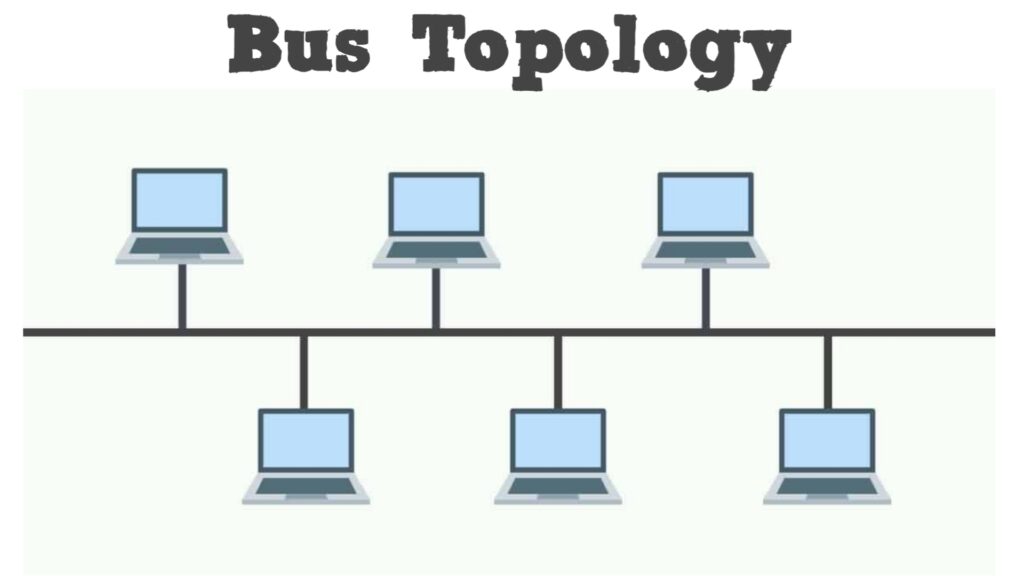- Network Topologies
This section will be divided into 4 major categories. Within these sections, discussions of hybrid topologies may take place.
Bus Topology
Ring Topology
Star Topology
Mesh Topology
Bus Topology is the simplest way to connect multiple clients
Ring Topology is where each node connects exactly to two other nodes, forming a single continuous pathway for signals through each node in a ring.
Star Topology is one of the most common networking topologies
Mesh Topology is where each node in a network may act as an independent router
http://webpage.pace.edu/ms16182p/networking/topologies.html
- Physical Network Topologies
2.1 Bus Network Topology
In Bus Network Topology a single cable is used to connect all devices on the net. This cable is often referred to as the network Backbone. When communication occurs between nodes the device sending the message broadcasts to all nodes on the network, but only the desired recipient digests the message. Advantages of this type of Physical Topology include ease of installation and minimization of the required cabling.
2.2 Ring Network Topology
Ring Network Topology has each node in a network connected to two other nodes in the network in conjunction with the first and last nodes being connected. Messages from one node to another then travel from originator to destination via the set of intermediate nodes. The intermediate nodes serve as active repeaters for messages intended for other nodes. Some forms of Ring Network Topology have messages traveling in a common direction about the ring (either clockwise or counterclockwise) while other forms of this type of configuration (called Bi-directional Rings) have messages flowing in either direction with the help of two cables between each connected node
2.3 Star Network Topology
Star Network Topology requires the use of a central top level node to which all other nodes are connected. This top level node may be a computer, or a simple switch, or just a common connection point. Messages received by the top level node can either be broadcast to all subordinate nodes, or if the top level device is of high enough fidelity, sent only to the desired subordinate node. Inter node messaging delays are reduced with this configuration. An important advantage of the Star Network Topology comes from the localization of cabling failures inherent in this configuration. Failure in the connection between the top level node and any subordinate node, or failure in a subordinate node will not disrupt the entire network.
2.4 Tree Network Topology
Tree Network Topology is constructed from either making a set of Star Network Topologies subordinate to a central node, or by linking a set of Star Network Topologies together directly via a bus, thereby distributing the functionality of the central node among several Star Network Topology top level nodes .
2.5 Mesh Network Topology
Mesh Network Topologies capitalize on path redundancy. This Topology is preferred when traffic volume between nodes is large. A proportion of nodes in this type of network have multiple paths to another destination node. With the exception of the Bi-directional Ring ( and this was only when a failure was detected ) each of the topologies discussed so far had only one path from message source to message destination. Thus the probability of single point network failure is greatly minimized with Mesh Network Topology. A major advantage of the Mesh Network Topology is that source nodes determine the best route from sender to destination based upon such factors connectivity, speed, and pending node tasks. A disadvantage of Mesh Network Topologies is the large cost incurred in setting up the network. A further disadvantage of this type of network is the requirement for each node to have routing algorithm for path computation. A full mesh is described as each node being directly connected to every other node in the network
https://www.cse.wustl.edu/~jain/cse567-08/ftp/topology/index.html



